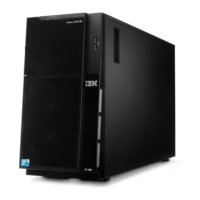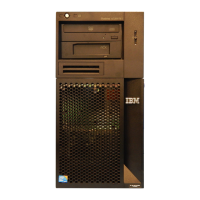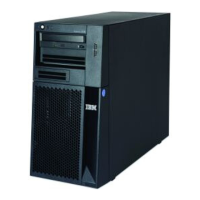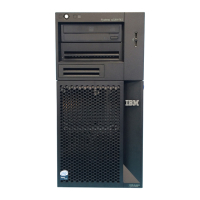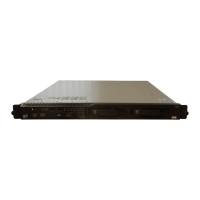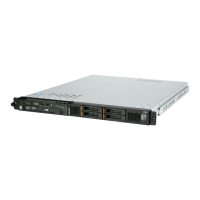Select this choice to view or change the start options, including the startup
sequence, keyboard NumLock state, PXE boot option, and PCI device boot
priority. Changes in the startup options take effect when you start the server.
The startup sequence specifies the order in which the server checks devices to
find a boot record. The server starts from the first boot record that it finds. If the
server has Wake on LAN hardware and software and the operating system
supports Wake on LAN functions, you can specify a startup sequence for the
Wake on LAN functions. For example, you can define a startup sequence that
checks for a disc in the CD-RW/DVD drive, then checks the hard disk drive, and
then checks a network adapter.
This choice is on the full Setup utility menu only.
v Boot Manager
Select this choice to view, add, or change the device boot priority, boot from a
file, select a one-time boot, or reset the boot order to the default setting.
Notes:
1. To have the server boot from a floppy disk, you must select Legacy Only as
the first option in the boot sequence.
2. When the server is unable to boot from a bootable device using the default
boot sequence, the server will automatically boot from a connected
hypervisor key or from an iSCSI source (if the server is connected to a target
iSCSI server) even when the hypervisor key and iSCSI options are not
included in the default boot sequence.
v System Event Logs
Select this choice to enter the System Event Manager, where you can view the
error messages in the system event logs. You can use the arrow keys to move
between pages in the event log.
The system event logs contain all event and error messages that have been
generated during POST, by the systems-management interface handler, and by
the system service processor. Run the diagnostic programs to get more
information about error codes that occur. See the Problem Determination and
Service Guide for instructions for running the diagnostic programs.
Important: If the system-error LED on the front of the server is lit but there are
no other error indications, clear the system-event log. Also, after you complete a
repair or correct an error, clear the system-event log to turn off the system-error
LED on the front of the server.
– POST Event Viewer
Select this choice to view the error messages in the POST event viewer.
– System Event Log
Select this choice to view the error messages in the system-event log.
– Clear System Event Log
Select this choice to clear the system-event log.
v User Security
Select this choice to set, change, or clear passwords. See “Passwords” on page
239 for more information.
This choice is on the full and limited Setup utility menu.
– Set Power-on Password
Select this choice to set or change a power-on password. For more
information, see “Power-on password” on page 239.
– Clear Power-on Password
238 IBM System x3630 M3 Type 7377: Problem Determination and Service Guide

